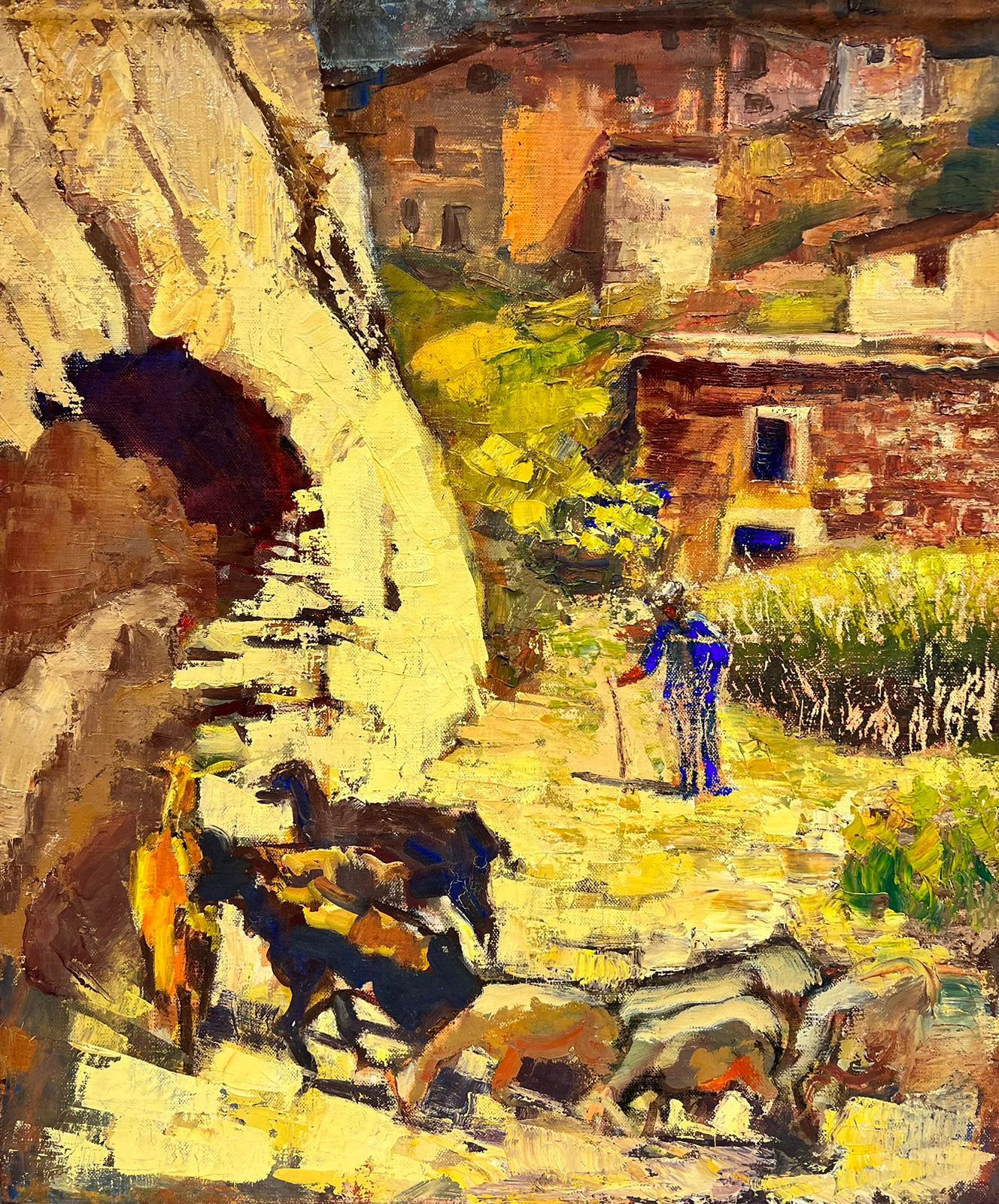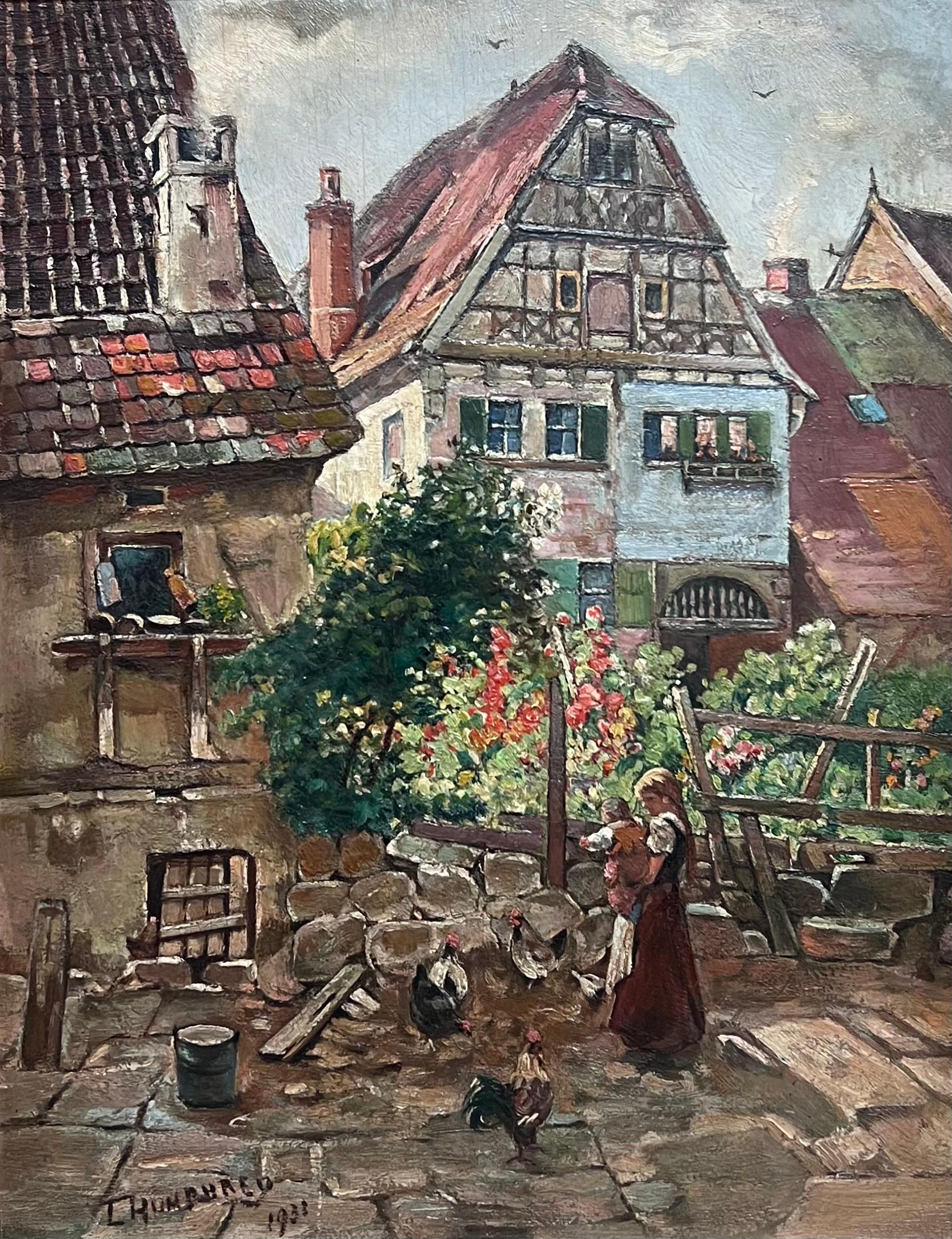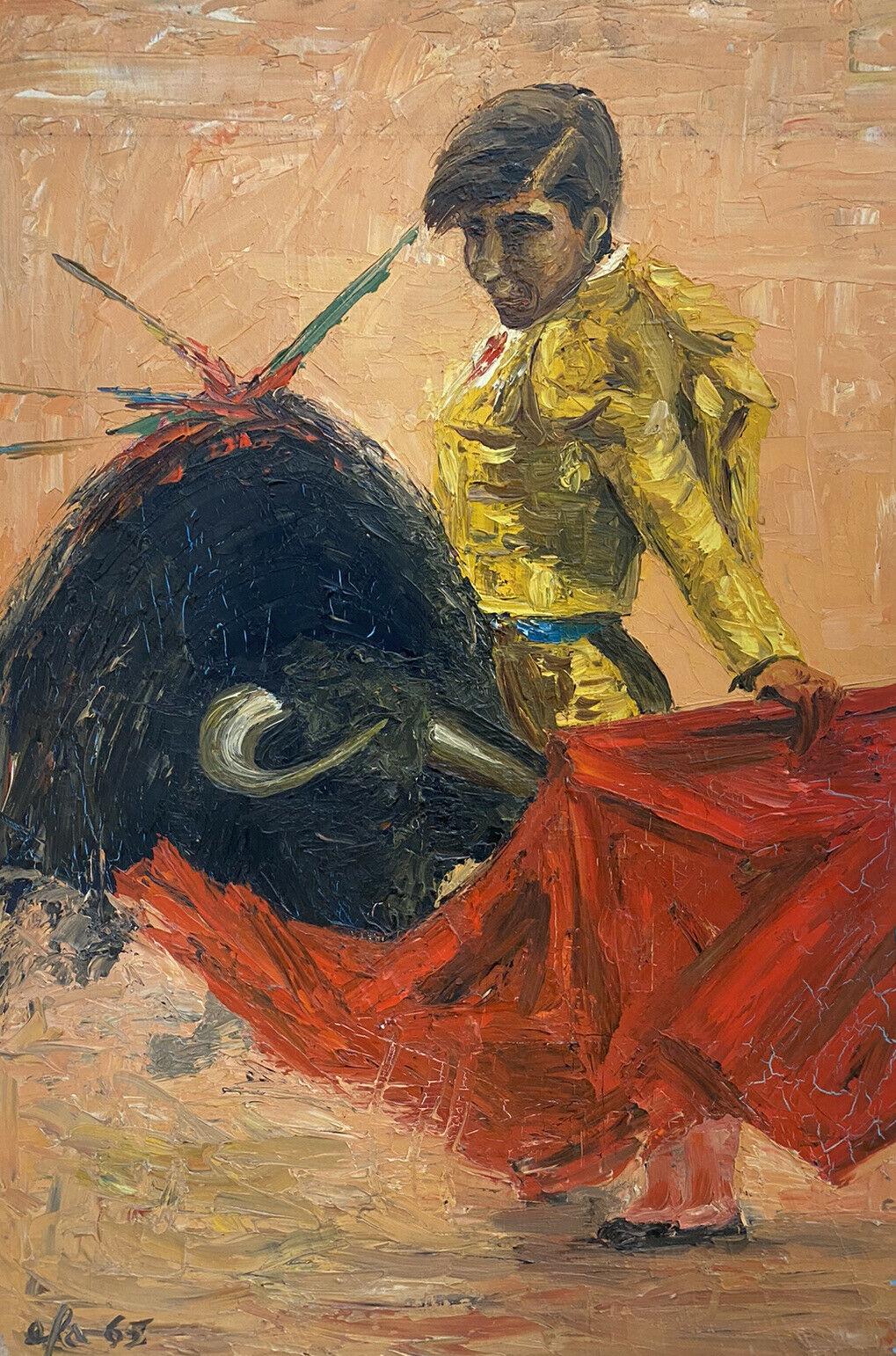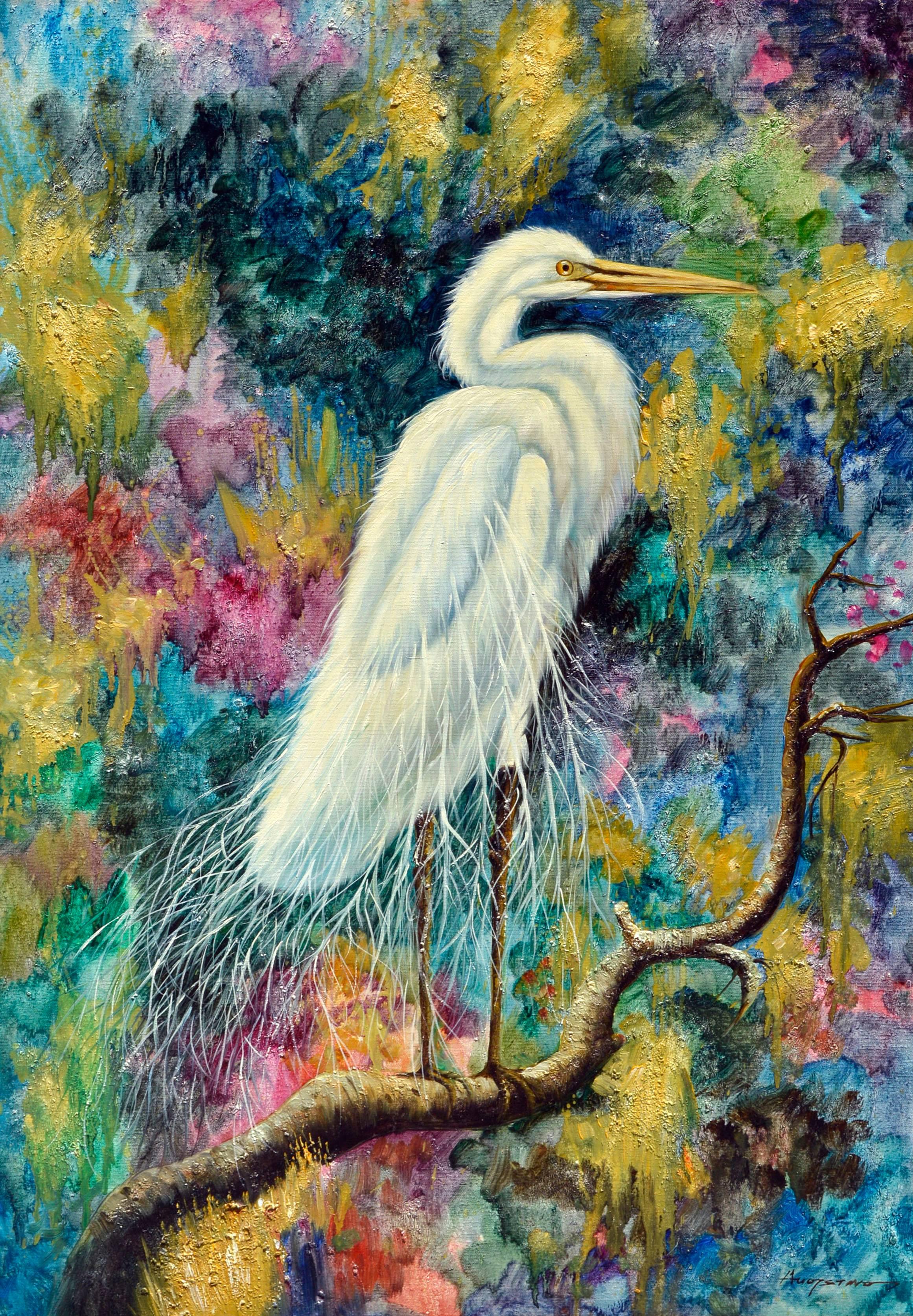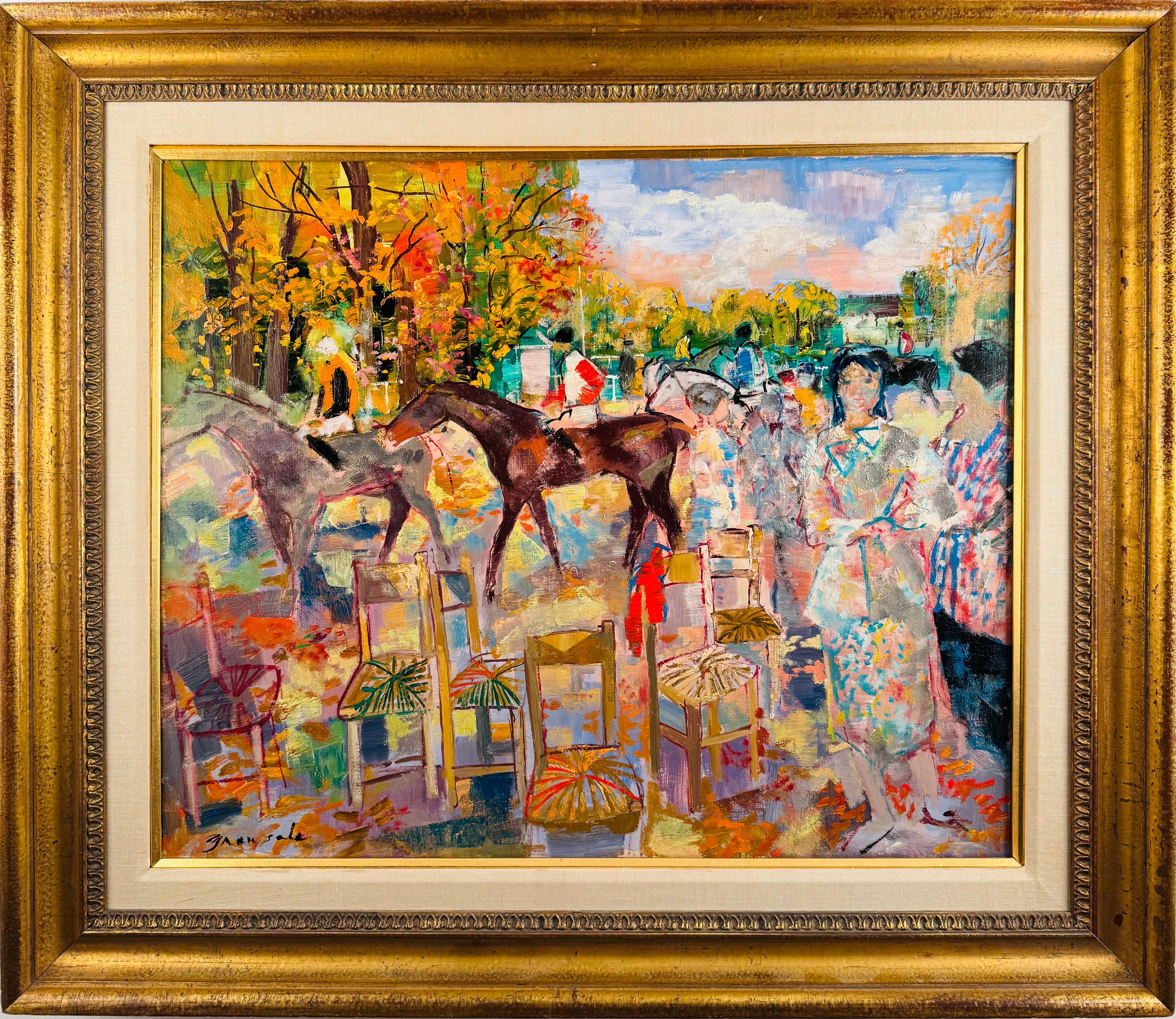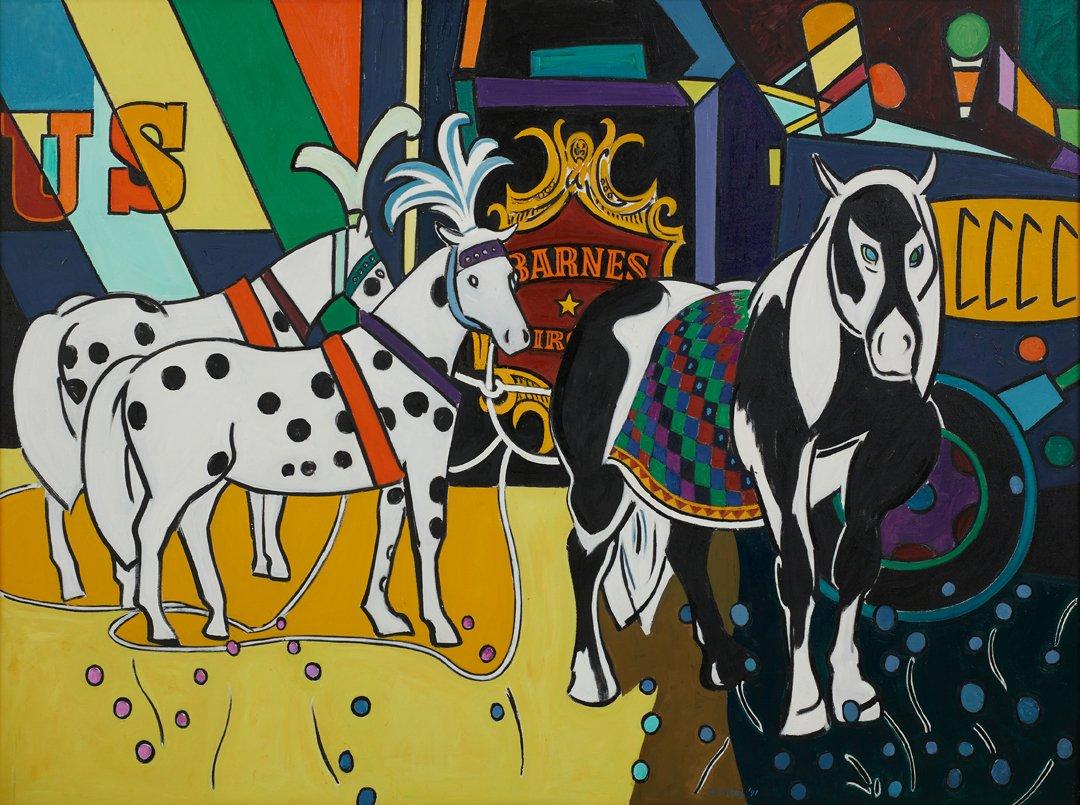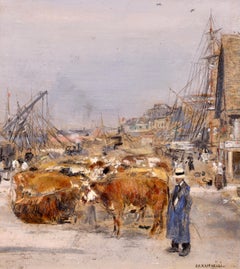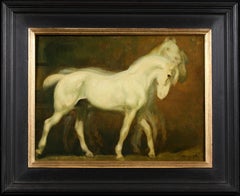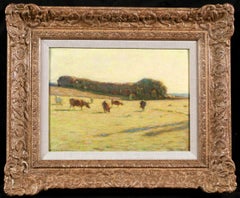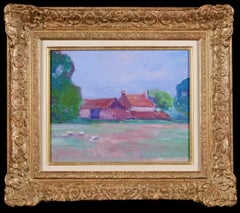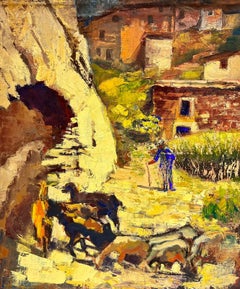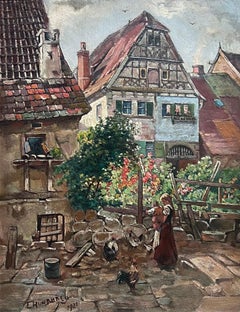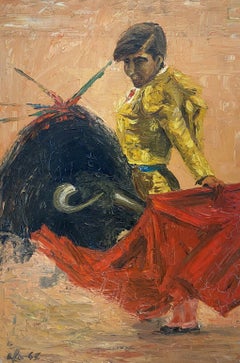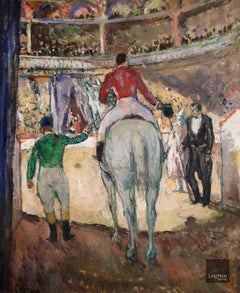
Au Cirque - Post Impressionist Oil, Figures & Horse at Circus by Marcel Cosson
View Similar Items
Want more images or videos?
Request additional images or videos from the seller
1 of 15
Jean-Louis-Marcel CossonAu Cirque - Post Impressionist Oil, Figures & Horse at Circus by Marcel Cossonc.1940
c.1940
Price:$5,920.52
$6,617.05List Price
About the Item
- Creator:Jean-Louis-Marcel Cosson (1878 - 1956, French)
- Creation Year:c.1940
- Dimensions:Height: 31 in (78.74 cm)Width: 27 in (68.58 cm)
- Medium:
- Movement & Style:
- Period:
- Condition:Very good original condition.
- Gallery Location:Marlow, GB
- Reference Number:Seller: LFA00571stDibs: LU41539954152
About the Seller
5.0
Gold Seller
Premium sellers maintaining a 4.3+ rating and 24-hour response times
Established in 2001
1stDibs seller since 2016
705 sales on 1stDibs
Typical response time: 1 hour
Authenticity Guarantee
In the unlikely event there’s an issue with an item’s authenticity, contact us within 1 year for a full refund. DetailsMoney-Back Guarantee
If your item is not as described, is damaged in transit, or does not arrive, contact us within 7 days for a full refund. Details24-Hour Cancellation
You have a 24-hour grace period in which to reconsider your purchase, with no questions asked.Vetted Professional Sellers
Our world-class sellers must adhere to strict standards for service and quality, maintaining the integrity of our listings.Price-Match Guarantee
If you find that a seller listed the same item for a lower price elsewhere, we’ll match it.Trusted Global Delivery
Our best-in-class carrier network provides specialized shipping options worldwide, including custom delivery.More From This Seller
View AllL'embarquement de boeufs - Impressionist Oil, Cattle by Jean Francois Raffaelli
By Jean-Francois Raffaelli
Located in Marlow, Buckinghamshire
Wonderful signed oil on panel cattle and figures in landscape by French impressionist painter Jean-Francois Raffaelli. The work depicts oxen being loaded onto ships in Honfleur, France en route to England.
Signature:
Signed lower right
Dimensions:
Framed: 18"x16"
Unframed: 9"x8"
Provenance:
Exhibition Jean Francois Raffaélli held at Galerie Simonson, 19 Rue Caumartin Paris - October 1929 (number 44)
Jean-François Raffaëlli's father was a failed Italian businessman and Raffaëlli himself was, among other things, a church chorister, actor and theatre singer. He then studied under Gérôme at the École des Beaux-Arts in Paris. He travelled to Italy, Spain and Algeria and on his return to France settled in Asnières.
In 1876, on a trip to Brittany, he first saw the potential of realist subject matter, if treated seriously. He became involved in meetings of artists at the Café Guerbois, where the Impressionist painters used to gather. As a result, Degas, contrary to the advice of the group, introduced Raffaëlli to the Impressionist exhibitions - according to one uncertain source as early as the very first exhibition, at the home of Nadar, and certainly to those of 1880 and 1881.
In 1904, Raffaëlli founded the Society for Original Colour Engraving. He first exhibited at the Salon de Paris in 1870 and continued to exhibit there until he joined the Salon des Artistes Français in 1881, where he earned a commendation in 1885, was made Chevalier of the Légion d'Honneur in 1889 and in the same year was awarded a gold medal at the Exposition Universelle. In 1906 he was made Officier of the Légion d'Honneur. He was also a member of the Société Nationale des Beaux-Arts. In 1884, a private exhibition of his work cemented his reputation.
He contributed to several newspapers such as The Black Cat (Le Chat Noir) in 1885 and The French Mail (Le Courrier Français) in 1886 and 1887. He published a collection entitled Parisian Characters, which captured his favourite themes of the street, the neighbourhood and local people going about their lives. In 1880 he participated, with Forain, on the illustration of Joris Karl Huysmans' Parisian Sketches (Croquis Parisiens). He also illustrated Huysman's Works. As well as working as an illustrator, he also made etchings and coloured dry-points.
His early attempts at painting were genre scenes, but once he was settled in Asnières he started to paint picturesque views of Parisian suburbs. From 1879 onwards, his subject matter drew on the lives of local people. These popular themes, which he treated with humanity and a social conscience, brought him to the attention of the social realist writers of the time such as Émile Zola. In addition to his realist style, Raffaëlli's dark palette, which ran contrary to the Impressionist aesthethic, helped to explain the opposition of those painters to his participation in their exhibitions. More concerned with drawing than colour, he used black and white for most of his paintings. Towards the end of his life, he lightened his palette, but without adopting any other principles of the Impressionist technique.
After painting several portraits, including Edmond de Goncourt and Georges Clémenceau, he returned to genre painting, particularly scenes of bourgeois life. Later in his career, he painted mainly Breton-inspired sailors and views of Venice. His views of the Paris slums and the fortifications, sites which have almost completely disappeared, went some way towards establishing a genre in themselves and perpetuated the memory of the area: The Slums, Rag-and-Bone Man, Vagabond, Sandpit, In St-Denis, Area of Fortifications. His realistic and witty portrayal of typical Parisian townscapes accounts for his enduring appeal.
Born in Paris, he was of Tuscan descent through his paternal grandparents. He showed an interest in music and theatre before becoming a painter in 1870. One of his landscape paintings was accepted for exhibition at the Salon in that same year. In October 1871 he began three months of study under Jean-Léon Gérôme at the École des Beaux-Arts in Paris; he had no other formal training.
Raffaëlli produced primarily costume pictures until 1876, when he began to depict the people of his time—particularly peasants, workers, and ragpickers seen in the suburbs of Paris—in a realistic style. His new work was championed by influential critics such as J.-K. Huysmans, as well as by Edgar Degas.
The ragpicker became for Raffaëlli a symbol of the alienation of the individual in modern society. Art historian Barbara S. Fields has written of Raffaëlli's interest in the positivist philosophy of Hippolyte-Adolphe Taine, which led him to articulate a theory of realism that he christened caractérisme. He hoped to set himself apart from those unthinking, so-called realist artists whose art provided the viewer with only a literal depiction of nature. His careful observation of man in his milieu paralleled the anti-aesthetic, anti-romantic approach of the literary Naturalists, such as Zola and Huysmans.
Degas invited Raffaëlli to participate in the Impressionist exhibitions of 1880 and 1881, an action that bitterly divided the group; not only was Raffaëlli not an Impressionist, but he threatened to dominate the 1880 exhibition with his outsized display of 37 works. Monet, resentful of Degas's insistence on expanding the Impressionist exhibitions by including several realists, chose not to exhibit, complaining, "The little chapel has become a commonplace school which opens its doors to the first dauber to come along."An example of Raffaëlli's work from this period is Les buveurs d'absinthe (1881, in the California Palace of Legion of Honor Art Museum in San Francisco). Originally titled Les déclassés, the painting was widely praised at the 1881 exhibit.
After winning the Légion d'honneur in 1889, Raffaëlli shifted his attention from the suburbs of Paris to city itself, and the street scenes that resulted were well received by the public and the critics. He made a number of sculptures, but these are known today only through photographs.[2] His work was also part of the painting event in the art competition at the 1912 Summer Olympics. In the later years of his life, he concentrated on color printmaking. Raffaëlli died in Paris on February 11, 1924
Museum and Gallery Holdings:
Béziers: Peasants Going to Town
Bordeaux: Bohemians at a Café
Boston: Notre-Dame; Return from the Market
Brussels: Chevet of Notre-Dame; pastel
Bucharest (Muz. National de Arta al României): Market at Antibes; Pied-à-terre
Copenhagen: Fishermen on the Beach
Douai: Return from the Market; Blacksmiths
Liège: Absinthe Drinker...
Category
1880s Impressionist Animal Paintings
Materials
Oil, Panel
Les Trois Chevaux - Modernist Animal Oil Painting by Louis Anquetin
By Louis Anquetin
Located in Marlow, Buckinghamshire
Signed oil on panel circa 1895 by French modernist painter Louis Anquetin. The piece depicts three white horses.
Signature:
Signed lower right
Dimensions:
Framed: 16.5"x20"
Unframe...
Category
1890s Modern Animal Paintings
Materials
Oil, Panel
Effets de lumiere dans le pre - Post Impressionist Landscape Oil by H Le Sidaner
By Henri Le Sidaner
Located in Marlow, Buckinghamshire
Signed post impressionist animals in landscape oil on board by French painter Henri Le Sidaner. This stunning piece depicts cattle in a field. The sun is starting to set casting blue...
Category
1890s Post-Impressionist Landscape Paintings
Materials
Oil, Board
A Sussex Farm - Fauvist Landscape Oil Painting by Robert Polhill Bevan
By Robert Polhill Bevan
Located in Marlow, Buckinghamshire
Fauvist oil on board landscape circa 1905 by British painter Robert Polhill Bevan. The piece depicts a view of farm in Sussex. The red-roofed farmhouses are nestled between lush gree...
Category
Early 1900s Fauvist Landscape Paintings
Materials
Oil, Board
Radiant Autumn -Wakken - Post Impressionist Oil, Cows in Landscape - Modest Huys
Located in Marlow, Buckinghamshire
Signed and dated divisionist landscape oil on canvas by Belgian post impressionist painter Modest Huys. This stunning piece is titled "Radiant Autumn - Wak...
Category
Early 20th Century Post-Impressionist Landscape Paintings
Materials
Canvas, Oil
Picnic by the Seine - Impressionist Figurative Oil by Albert Dubois-Pillet
Located in Marlow, Buckinghamshire
Signed oil on paper laid on board figures in landscape circa 1890 by French Neo-Impressionist painter Albert Dubois-Pillet. This pointillist piece depicts and elegant couple enjoying...
Category
1890s Pointillist Figurative Paintings
Materials
Oil, Board, Laid Paper
Price Upon Request
Free Shipping
You May Also Like
plowing with oxen oil on board painting Spain
By Juan Soler
Located in Barcelona, Barcelona
Oil measures 30x30 cm.
Frame measures 52x52 cm.
He was born in 1951. Under the direction of the teacher Pedro Bermejo, he began his artistic career, quickly standing out and observing in his works an unusual mastery of drawing.
A highly mature painter who has known how to stop time in all his works. His themes are preferably costumbrist, although in his work it is usual to see 18th century themes, with horse carriages, hats, umbrellas and still lifes.
Observing his work reminds us, due to the theme, of Maestro Palmero...
Category
21st Century and Contemporary Post-Impressionist Animal Paintings
Materials
Board, Oil
$412 Sale Price
42% Off
Herding The Fleet Of Animals French Impressionist Thick Oil Impasto
By Josine Vignon
Located in Cirencester, Gloucestershire
Herding Animals
by Josine Vignon (French 1922-2022)
stamped verso
oil painting on canvas, unframed
canvas: 22 x 18 inches
Colors: Yellow colors, brown, ...
Category
Mid-20th Century Post-Impressionist Figurative Paintings
Materials
Oil
$872 Sale Price
30% Off
Charming English Village Street Scene Young Mother & Child Chickens Cottages
Located in Cirencester, Gloucestershire
The Old Village
English School, circa 1931
signed oil on board, framed
dated 1931
framed: 15 x 12.5 inches
board: 12.5 x 10 inches
Provenance: private collection, England
Condition: ...
Category
Mid-20th Century Post-Impressionist Figurative Paintings
Materials
Oil
FERNAND AUDET (1923-2016) FRENCH IMPRESSIONIST OIL - THE MATADOR & BULL FIGHT
By Fernand Audet
Located in Cirencester, Gloucestershire
"The Matador"
by Fernand Audet (French, Tarascon 1923- Mulhouse 2016)
signed bottom left
oil painting on board, unframed
painting: 28.75 x 19.5 inches
A fine 20th century oil paint...
Category
Mid-20th Century Post-Impressionist Figurative Paintings
Materials
Oil
Sheep Shearers, Tangiers - British 1920's Orientalist figurative oil painting
By Gerald Spencer Pryse
Located in London, GB
This superb vibrant Orientalist Post Impressionist oil painting is by noted British artist Gerald Spencer Pryse. It was painted about 1925 when Pryse was visiting Morocco and Norther...
Category
1920s Post-Impressionist Animal Paintings
Materials
Oil
The Fauvist White Egret
By Augostino
Located in Soquel, CA
Fauvist style White Egret by Augostino (American, 20th Century). Modernist/Realist adaptation of a familiar theme. One small tear repaired professionally. ...
Category
1970s Fauvist Animal Paintings
Materials
Canvas, Oil
$1,480 Sale Price
20% Off
